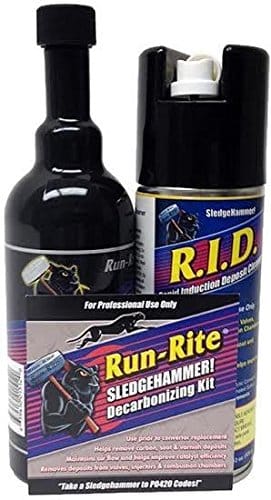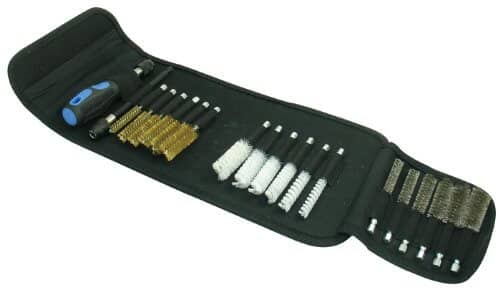
Table of Contents
Background
Loss of power, rough idle or elevated emissions results in more and more inexpensive repairs. The increasingly common cause of this is a dirty or stuck EGR valve and carbonized intake and exhaust components. Best Way to Clean The EGR Valve
If an EGR valve is stuck in an opened position, exhaust gases will uncontrollably enter the intake. This can cause the following symptoms:
- The engine will run very rough until it warms up
- Stalling and rough running while idling when it warms up
- Strong fuel smell when the engine is running
- Increased fuel consumption
With an EGR valve clogged or stuck in a closed position, there will be no exhaust flow into the intake. This will cause a higher combustion temperature, so you might experience some of the following:
- Pinging noise from the engine when accelerating at low engine speeds
- Strong detonations caused by excessive heat
In both cases, you will probably have a ‘check engine’ light that stays on. In addition, it is most likely that your car will fail emission tests due to the high level of hydrocarbons (HC) or nitrogen oxides (NOx).
Best EGR Valve Cleaner Reviews
In most cases, it possible to solve this problem with cleaning. Here is a selection of several products suitable for this job.
Use this professional product formulated to quickly remove deposits caused by exhaust gases in diesel engines. Performance and power is restored and emissions reduced.
- Special active solvent with a high-tech additive.
- Dissolves and removes all greasy deposits and contaminants such as oil, resins, adhesive residues, etc.
- Ensures operability of all moving parts and reduces fuel consumption. Increases the reliability of diesel-powered engines.
- Restores performance and reduces emissions.
- Suitable for vehicles with EGR exhaust gas recirculation valve and DPF.
This is an aerosol product is especially developed for cleaning the air intake system of all diesel engines.
- Removes deposits from valves, injectors and combustion chambers
- Specially designed solutions to remove excess carbon and soot
- Rapid induction deposit cleaner slowly released solution preventing damage
- Reduces emissions and improves fuel economy
- Restores lost power
You will need this set of brushes for cleaning oddly shaped intake components. Remove even the hardest build-ups, without damaging the part itself.
You will need this set of brushes for cleaning oddly shaped intake components. Remove even the hardest build-ups, without damaging the part itself.
- Used for general machining: cleaning and deburring cylinders, pipes, tubes.
- Can also be operated with drills, pneumatic drills or cordless screwdrivers.
- 20 Piece wire brush set, with stainless steel, brass and nylon brushes
- Quick-release soft handle allows brushes to be used without a power drill and comfortable grip reduces hand fatigue.
How To Clean The EGR Valve?
As you may see from our selection, there are several possible methods for cleaning EGR valve. Choosing the most suitable depends on how badly the EGR valve is clogged. Egr valve cleaning
- The easiest way is to use one of the widely available EGR valve cleaning fluids. Not only that they are easy to use and do not require any expertise, but also only a minimum of tools is needed. The procedure is extremely simple, as you only need to remove the intake hose and spray the cleaner into the intake manifold. For a more detailed description, please read this article. The downside of this type of cleaners is that they are limited to solving blockages that are not too stubborn.
-
Step up in the cleaning department are the two-stage cleaning systems. You can consider them as a more powerful EGR cleaning fluids. The first step is identical to any EGR cleaner. Yet, as the cleaner itself is more aggressive and powerful, it requires some experience to avoid eventual damage to the engine or catalytic converter. The second step is adding a fuel additive. Driving like that ensures that any residual build-up is cleaned with time. Although most of them are intended for professional users, there are several products available for amateurs.
-
On a poorly maintained and badly neglected car, you might come across a EGR system that is extremely carbonized and dirty. This is a problem that no spray or fluid will solve, so your only option will be to take it apart. You will have to remove the EGR valve and connecting piping from the car and perform mechanical cleaning. A selection of small chisels and various wire brushes will be needed for this job, as well as a can or two of EGR or carb cleaner. Take your time to patiently and methodically remove the gunk. Do not use much force, as you may damage the body or moving parts. If possible, while the EGR valve is not installed, try to check if it works. Depending on the EGR type, this is done by either applying vacuum or measuring the resistance with a multimeter. Also, if there are any gaskets on removed parts, you will need to renew them as well.
How Does The EGR System Work?
The exhaust gas recirculation system, or EGR, is an emission control device. It is found in many modern cars, both gasoline or diesel.
It is designed to flow a portion of exhaust gases back into the engine intake, where it mixes with fresh intake air before it enters the combustion chamber.
How does the EGR system work
As this system is fairly simple, the EGR valve is the usual failure point. Although it can suffer from internal breakdowns, in most cases the failure will be caused by a carbon deposit build-up. Oil vapors, poor engine combustion, excessive wear and even unfavorable driving profiles can cause the formation of carbon deposits on the EGR system components. As a result, the system operation will be obstructed.
Common causes for EGR valve carbon build-up are:
- Frequent short drives
- Excessive oil level
- Excessive oil consumption
- Blocked crankcase ventilation system
- Faulty turbocharger
- Irregular oil changes
- Using inadequate engine oil
- Worn out engine
 by
by 

